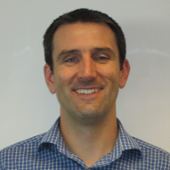Programme
-
Registration and Refreshments
-
Opening Remarks from the Chair
-
Keynote Time for a Brand New Way Forward for Gas Risk Assessment
It is 20 years since Wilson and Card was published in Ground Engineering. Remarkably it still underpins the Characteristic Situation approach in BS8485: 2015 + A1: 2019: 2019.
Geoff and Steve thought it was about time the agenda was moved on and reduced the inherent over conservatism and often unnecessary use of gas protection in the industry. They will present a new approach for ground gas risk assessment, based on worldwide experience and guidance
-
Panel and Audience Participation Discussion
-
Proven Active Soil Gas Sampling Techniques for Efficient Site Characterization, Vapor Intrusion Investigation and Mitigation
Recent advancements in the vapor intrusion field have significantly streamlined and improved the assessment process. Through the use of these new advances, the environmental professional can complete a thorough and accurate assessment of sub-slab vapor conditions in less time and at a lower cost. Information generated by an accurate assessment can then be leveraged using GIS applications to increase the understanding of a VOC source’s age and the potential release mechanism.
Field activities associated with the assessments, which are typically completed within a week or less, can result in datasets consisting of as many as 200 separate sub-slab soil gas locations. Screening data obtained using common hand-held instruments allows these assessments to proceed very efficiently and cost effectively. The results of the screening assessments help to focus subsequent investigations. Case studies will be presented demonstrating the proven active soil gas sampling techniques for Efficient Site Characterization, Vapor Intrusion Investigation and Mitigation.
We will discuss
- Considerations;
- Active vs Passive;
- Proven Sampling Techniques / Case Studies;
- Family of Products; and
- Uses
-
Morning Refreshments & Networking
-
Receptor Monitoring and Risk Assessment for Ground-Gas
With the publication of CIRIA C735 there is a much greater focus on the quality of gas protection measure installation and its validation. Where doubts remain regarding the quality of the installed gas protection installation or where validation reports are missing, developers face the risk of having unsaleable properties as planning conditions cannot be discharged. The available options available are limited to:
A) Demolition and rebuild
B) Retrofit measures where possible
C) Receptor Monitoring and Risk Assessment
This presentation will discuss the context of inadequate gas protection installation and the available techniques and best practice for receptor monitoring and risk assessment. Case studies will be referenced throughout including, high resolution sub-floor void monitoring, internal monitoring and sampling and how these can be used to inform risk management decisions for both new build and existing properties. Examples of common problems and poor workmanship will be provided. -
Machine Learning Applied to Ground Gas and Data Analytics
- Taking advantage of the ever-increasing amounts of continuous monitoring & environmental data and combining with machine learning based tools;
- Rapid gathering, processing & analysis of ground gas data with minimal human interaction;and
- Understanding the exciting potential capabilities of AI within the brownfield sector
-
Networking Lunch
-
Welcome Back
-
Vapour Intrusion, Latest Trends and Practices
Vapour intrusion is a challenging and rapidly evolving area of land contamination assessment. This presentation aims to provide practitioners with increased confidence in vapour intrusion decision processes and will discuss topics including the following: VI-CSM and key sources of uncertainty; divergence in approach to the assessment of volatile petroleum hydrocarbons and chlorinated solvents; and latest trends in vapour intrusion pathway assessment.
-
Ground Gas Protection Measures
Peter AtchisonManaging Director, PAGeotechnical Ltd -
Afternoon Refreshments & Networking
-
Case studies - Ground Gas Investigation, Risk Assessment and Remediation
-
Removing the Risk - Boo Hole Landfill Site
Boo Hole a former landfill, determined as statutory contaminated land under Part 2A of the Environmental Protection Act 1990, made on the basis of the potential significant risk to human health associated with migration of hazardous ground gas towards residential properties located on the eastern and southern boundary of the site. The landfill was historically worked as a sand quarry from circa 1893 for approximately 60 years. The quarry commenced accepting landfill waste from approximately 1971 until the 1990s when the site was closed and landscaped.
 Michael Moore
Environmental Health Senior Officer, Public Protection, Rochdale Metropolitan Borough Council
Michael Moore
Environmental Health Senior Officer, Public Protection, Rochdale Metropolitan Borough Council -
Remote Sites, Remote Monitoring and New Technology to Make Better Risk Management Decisions
The “norm” within our industry is changing. New technologies are emerging which will enable us to more cost effectively characterise sites and the risks associated with the contamination present. On remote sites, simple transport costs of getting to site can be timely, costly, unsustainable and also present unacceptable worker health and safety risks. Our work looked at using remote telemetry and new monitoring techniques to better characterise the long term risks associated with contamination at a coastal site and, through the interpretation of this improved data set, develop a pragmatic and robust risk management solution for the site.
 Tony Windsor
Geo-Environmental Lead, Lower Thames Crossing & Associate Technical Director, Site Evaluation & Restoration, Arcadis
Tony Windsor
Geo-Environmental Lead, Lower Thames Crossing & Associate Technical Director, Site Evaluation & Restoration, Arcadis -
Case Study
-
Closing Remarks







